
# 3182j FDC - 1998 32c Celebrate the Century - 1900s: John Muir, Preservationist
1998 32¢ John Muir – Preservationist
Celebrate the Century – 1900s
City: Washington, DC
Quantity: 12,533,333
Printed By: Ashton-Potter (USA) Ltd
Printing Method: Lithographed
Perforations: 11 ½
Color: Multicolored
Happy Birthday John Muir
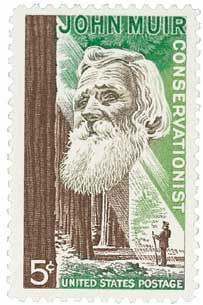
John Muir was born on April 21, 1838, in Dunbar, Scotland. The third of eight children, Muir attended school in Scotland until he was 11, when the family moved to Fountain Lake, and later Portage, Wisconsin.
Muir’s father was strict, making the family work on the farm from dawn to dusk. Whenever he was allowed short breaks, Muir and his younger brother would explore the fields.
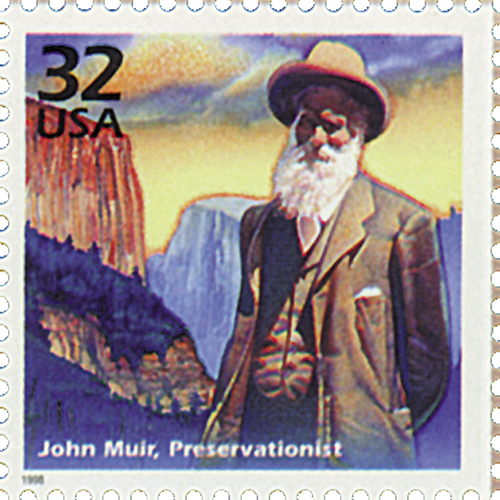
Muir was a bright and curious child, having invented a number of items at a young age, including a horse feeder, a table saw, and a wooden thermometer. He showed some of these at the state fair and was then admitted to the University of Wisconsin. Though he was a good student, Muir left the school after three years to travel the northern U.S. and Canada. He did a number of odd jobs along the way to support himself. Among them was a job in a carriage parts shop in Indiana that almost blinded him. The accident led Muir to dedicate his years to exploring the beauty of nature. In less than a year, he walked 1,000 miles from Indianapolis to the Gulf of Mexico, sailed to Cuba, crossed the Isthmus of Panama, and sailed up the west coast to San Francisco.
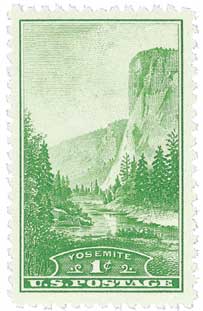
Then, in March 1868, after expressing an interest in nature, he was directed to the Sierra Nevada and Yosemite. Muir spent about ten days there and was so moved by its natural beauty and peculiar sights that he returned the following year, finding work as a ranch hand and then a shepherd.
Leading a flock of about 2,000 sheep, Muir studied and sketched the plants, animals, and unusual rock formations. He began writing articles for various magazines across the country, describing the grand views and explaining his belief that glaciers created the valleys and major landforms.
By the 1870s, Muir began to worry about Yosemite’s safety, especially the grazing of the “hoofed locusts” he had once protected, eating much of the valley’s once-lush grass and greenery. He was also concerned about the logging of giant sequoia trees.
For several years, Muir invited guests to the park to show them its natural beauty and importance, in the hope of getting their support for his preservation efforts. In 1871, Muir convinced author Ralph Waldo Emerson, who was under pressure as a Harvard lecturer, to visit Yosemite for a month. Emerson was amazed at the views and named a giant sequoia.
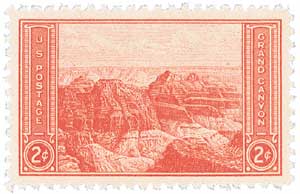
He named the tree Samoset, after the first American Indian to have contact with the Pilgrims. Emerson, who was 68 at the time of his visit, told his wife that if he were a younger man, he would have stayed for good.
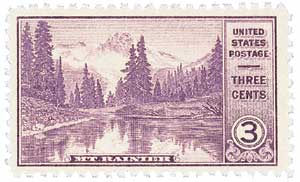
By the 1880s, John Muir was no longer living in Yosemite. Though he loved it there, he had an intense wanderlust that saw him travel the world – Alaska, Australia, South America, Africa, Europe, China, and Japan. But he still invited others to camp there with him, and tried to promote its protection. One of these visitors was Robert Underwood Johnson, editor of The Century Magazine. Johnson gave Muir a national audience for his writing. Together, they lobbied Congress to establish Yosemite as a National Park. On October 1, 1890, their efforts paid off, and President Benjamin Harrison officially declared Yosemite a National Park. That year Muir also helped to found Sequoia National Park.
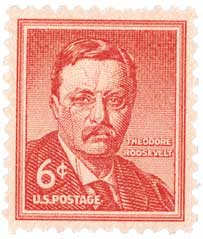
Two years later, Muir helped found the Sierra Club to “do something for wildness and make the mountains glad.” He served as the group’s first president for over 20 years. In 1901, he published Our National Parks, which earned him national attention. Among those impressed by the book was future President Theodore Roosevelt. Two years later, Roosevelt joined Muir on a camping trip in Yosemite that helped guide his future conservation programs.
Muir took one of his last trips at the age of 73, to the Amazon. In a few short years his health began to suffer and he d
1998 32¢ John Muir – Preservationist
Celebrate the Century – 1900s
City: Washington, DC
Quantity: 12,533,333
Printed By: Ashton-Potter (USA) Ltd
Printing Method: Lithographed
Perforations: 11 ½
Color: Multicolored
Happy Birthday John Muir

John Muir was born on April 21, 1838, in Dunbar, Scotland. The third of eight children, Muir attended school in Scotland until he was 11, when the family moved to Fountain Lake, and later Portage, Wisconsin.
Muir’s father was strict, making the family work on the farm from dawn to dusk. Whenever he was allowed short breaks, Muir and his younger brother would explore the fields.

Muir was a bright and curious child, having invented a number of items at a young age, including a horse feeder, a table saw, and a wooden thermometer. He showed some of these at the state fair and was then admitted to the University of Wisconsin. Though he was a good student, Muir left the school after three years to travel the northern U.S. and Canada. He did a number of odd jobs along the way to support himself. Among them was a job in a carriage parts shop in Indiana that almost blinded him. The accident led Muir to dedicate his years to exploring the beauty of nature. In less than a year, he walked 1,000 miles from Indianapolis to the Gulf of Mexico, sailed to Cuba, crossed the Isthmus of Panama, and sailed up the west coast to San Francisco.

Then, in March 1868, after expressing an interest in nature, he was directed to the Sierra Nevada and Yosemite. Muir spent about ten days there and was so moved by its natural beauty and peculiar sights that he returned the following year, finding work as a ranch hand and then a shepherd.
Leading a flock of about 2,000 sheep, Muir studied and sketched the plants, animals, and unusual rock formations. He began writing articles for various magazines across the country, describing the grand views and explaining his belief that glaciers created the valleys and major landforms.
By the 1870s, Muir began to worry about Yosemite’s safety, especially the grazing of the “hoofed locusts” he had once protected, eating much of the valley’s once-lush grass and greenery. He was also concerned about the logging of giant sequoia trees.
For several years, Muir invited guests to the park to show them its natural beauty and importance, in the hope of getting their support for his preservation efforts. In 1871, Muir convinced author Ralph Waldo Emerson, who was under pressure as a Harvard lecturer, to visit Yosemite for a month. Emerson was amazed at the views and named a giant sequoia.

He named the tree Samoset, after the first American Indian to have contact with the Pilgrims. Emerson, who was 68 at the time of his visit, told his wife that if he were a younger man, he would have stayed for good.

By the 1880s, John Muir was no longer living in Yosemite. Though he loved it there, he had an intense wanderlust that saw him travel the world – Alaska, Australia, South America, Africa, Europe, China, and Japan. But he still invited others to camp there with him, and tried to promote its protection. One of these visitors was Robert Underwood Johnson, editor of The Century Magazine. Johnson gave Muir a national audience for his writing. Together, they lobbied Congress to establish Yosemite as a National Park. On October 1, 1890, their efforts paid off, and President Benjamin Harrison officially declared Yosemite a National Park. That year Muir also helped to found Sequoia National Park.

Two years later, Muir helped found the Sierra Club to “do something for wildness and make the mountains glad.” He served as the group’s first president for over 20 years. In 1901, he published Our National Parks, which earned him national attention. Among those impressed by the book was future President Theodore Roosevelt. Two years later, Roosevelt joined Muir on a camping trip in Yosemite that helped guide his future conservation programs.
Muir took one of his last trips at the age of 73, to the Amazon. In a few short years his health began to suffer and he d













